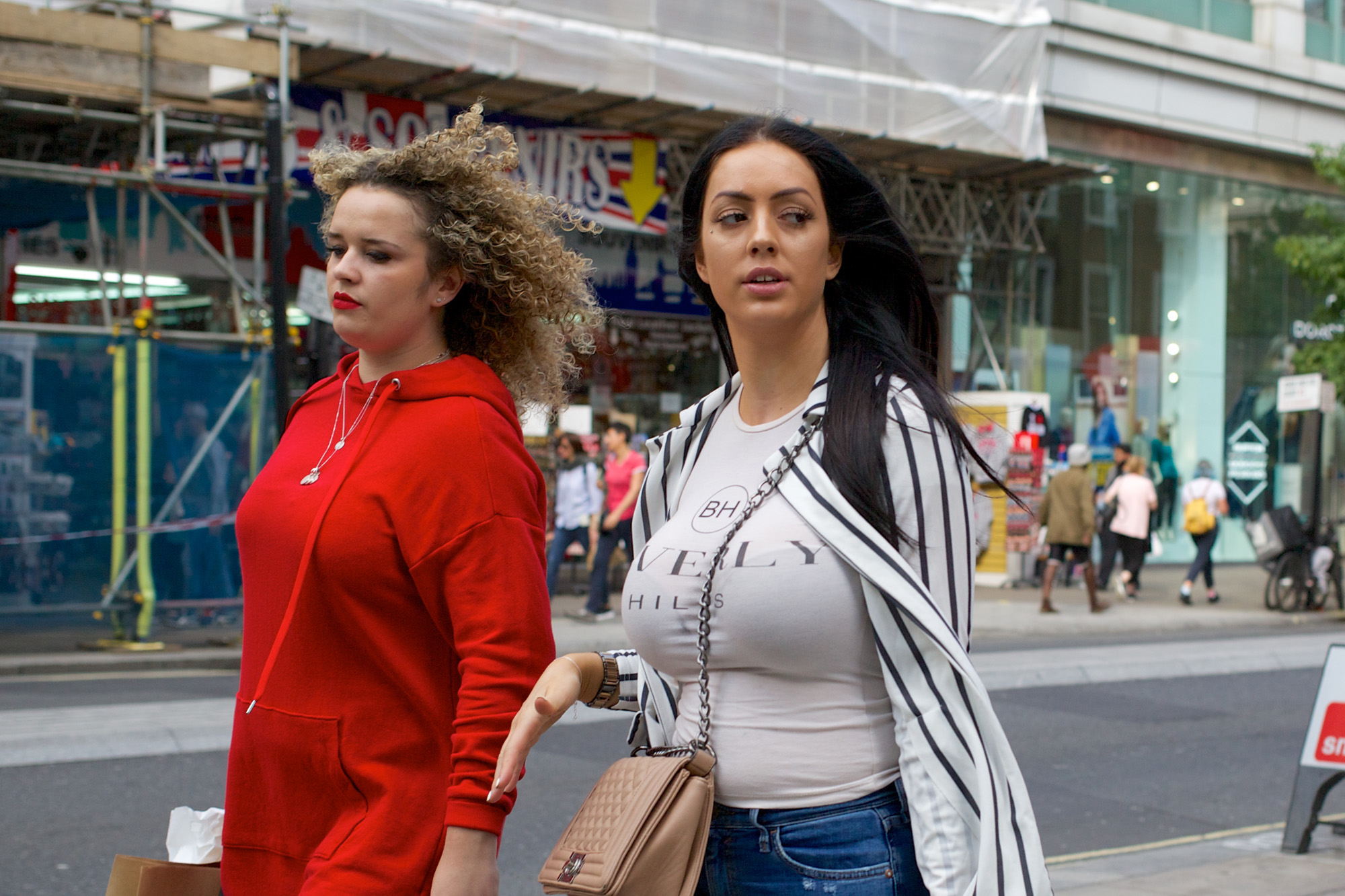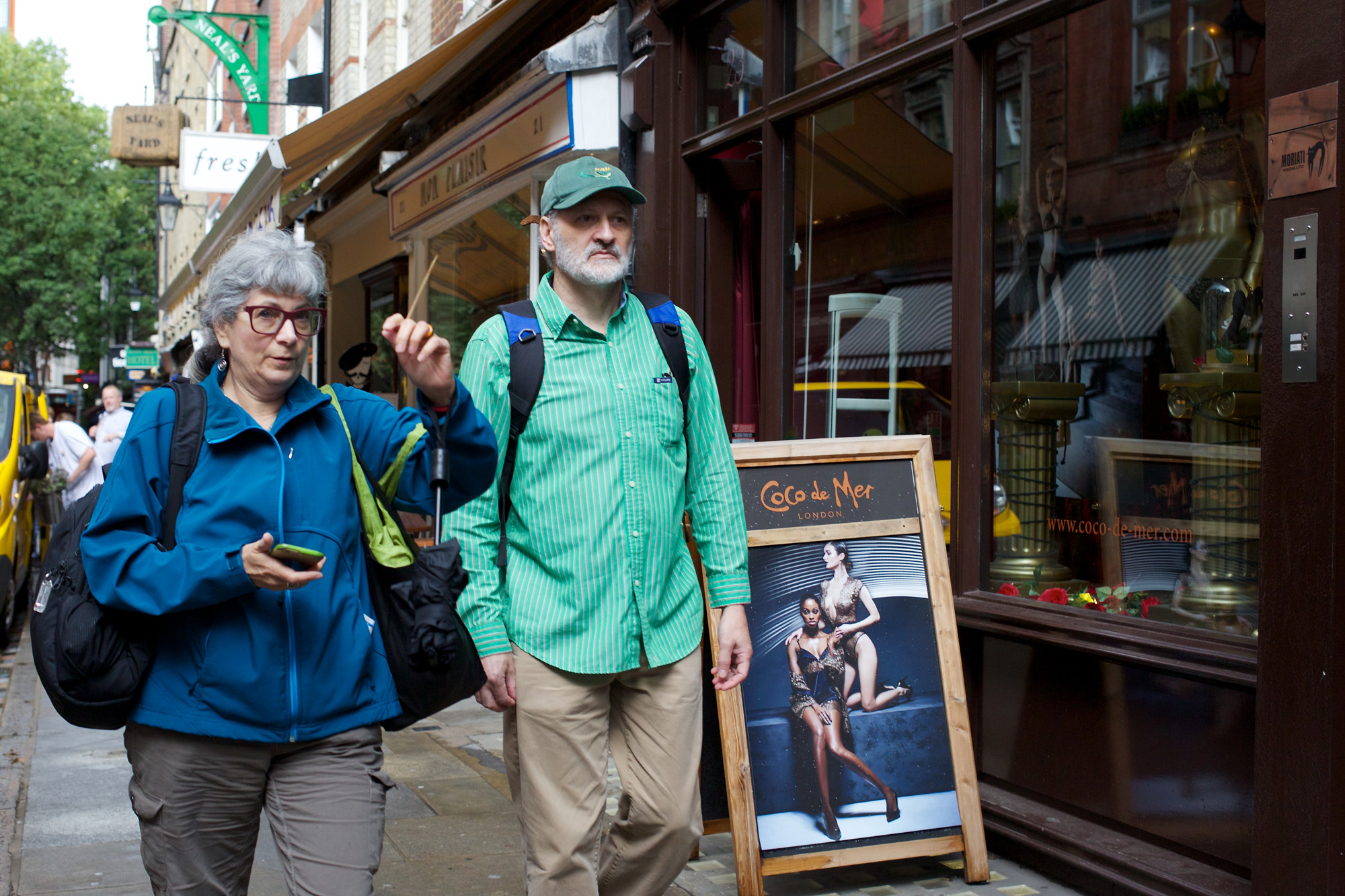Is shooting from the hip a good way to take street photos? Such an innocent question! The answer is yes. And no.
In thinking about it very carefully and weighing up the arguments for and against I find myself questioning the very purpose, essence and philosophy of street photography: its ethics, its aesthetics, its whatever.
Let’s look at three arguments in its favour.
1. Shooting from the hip certainly gets you great shots, if only occasionally.
2. It enables you to take shots that would otherwise be impossible. For example, when you know the subject may glance in your direction and ruin the shot if you raise the camera to your eye.
3. It’s often good to get a lower angle of view, looking up at your subject and cutting out extraneous detail from the background.
The featured image (above) shows some of the virtues of shooting from the hip. I like the shot because it identifies a particular moment that cannot be repeated. The light is on outside the Gay Hussar restaurant (which has now closed permanently). Yet the whole scene remains typical of a chilly day in London. I couldn’t have taken the shot in any other way and achieved the same result.
The Easy Option?
One argument against shooting from the hip is that it’s too easy: like shooting ducks in a barrel. (Ducks have to be easier than fish). I would counter this by insisting: once you’ve mastered how to get the subject in sharp focus, which isn’t as easy at you might think, the technique does at least allow you to get close without being noticed (image above).
Other Arguments
Now let’s look at three, more effective arguments against it.
1. It can be very “hit and miss,” with a depressingly high percentage of failures.
2. It removes your main control over the composition of each photo taken in this way.
3. With loss of control comes loss of intentionality. In other words, you’re inviting Lady Luck to play her part, rather than deliberately taking the shots you want.
Should we imagine a pair of scales and place these two sets of arguments on either side? Which scale would have the weightier argument overall?
Frankly, I can’t offer a definitive answer. You’ll have to decide for yourself, after giving it a try. Personally, I quite enjoy shooting from the hip and I don’t see any harm in it unless it becomes habitual.
Other photographers are not of the same opinion.
The Winogrand View
For example, American street photographer Garry Winogrand, as reported by Mason Resnick in the June 1988 issue of Modern Photography, was surprisingly adamant that shooting from the hip was a really bad idea.
Wrote Resnick: “I tried to mimic Winogrand’s shooting technique. I went up to people, took their pictures, smiled, nodded, just like the master. Nobody complained; a few smiled back! I tried shooting without looking through the viewfinder, but when Winogrand saw this, he sternly told me never to shoot without looking. ‘You’ll lose control over your framing,’ he warned.”
On looking at Winogrand’s images one could reasonably reply: “What framing?” — and personally I have other objections to his technique, including all that smiling and nodding which tends to make subjects smile back! Would he not have achieved better results — more authentic results — by shooting from the hip?
I’ll leave that rhetorical question hanging in the air.
Parting Shot
Here’s my parting shot: an example of shooting from the hip that was not “hit and miss” and didn’t sacrifice control or composition. In fact, it had been my explicit intention to photograph a tourist couple marching past London’s Coco-de-Mer shop (“Fashionable purveyor of designer sex toys, lingerie and other clothing, erotic books and gifts.”)
I was quickly rewarded with this photo, in which the man succeeds admirably in keeping his eyes in the direction of his companion’s gesture, despite the delights on offer elsewhere.
Neither of them looked in my direction, either. Thank heavens!

























